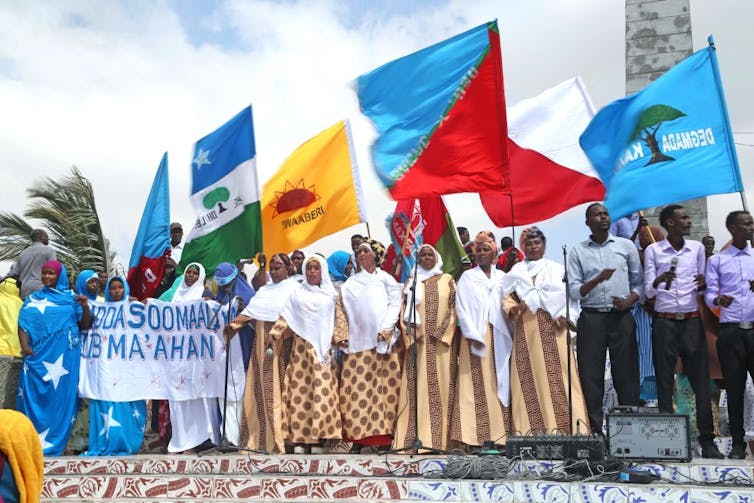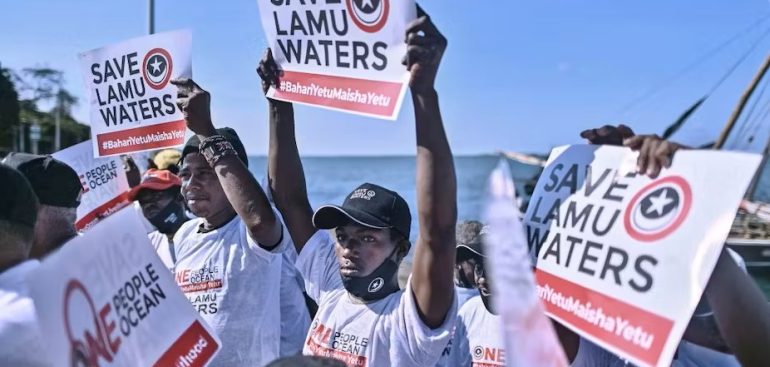Following a maritime boundary dispute, Somalia instituted proceedings against Kenya at the International Court of Justice in August 2014. The two east African neighbours dispute 160 000 square kilometres of territory in the Indian Ocean with prospects of vast oil and gas deposits.
The dispute stems from conflicting interpretations of how boundaries should extend into the Indian Ocean. Somalia’s claim is that its southern boundary should run south-east as an extension of the land border. Kenya’s contention is that Somalia’s border should take a roughly 45-degree turn at the shoreline and run in a latitudinal line.
Amid diplomatic contestations between the two, the court process has dragged on for almost seven years. In March 2020, Kenya announced that it would no longer participate in the court proceedings. Nairobi has protested against perceived bias in the court’s refusal to entertain its request to delay the hearings.
Kenya pleaded that the COVID-19 pandemic struck when it had just recruited a new legal team to mount its defence. The team had not had a chance to meet and prepare for the case due to pandemic protocols. The request was rejected by the court.
Even though the court has a mandate to hear and determine the case, the implementation of its rulings will face various challenges. Kenya can cite the lack of adherence to the rules as it was not part of the proceedings and was not represented in the case. Additionally, the international court does not have an enforcement agency and relies on the goodwill of parties to conflict to comply with rulings or the United Nations Security Council to enforce its ruling through coercive diplomacy.
Kenya is now pushing for a “diplomatic solution” as it has done for years. It remains to be seen whether the diplomatic route is feasible amid constant seesaw of diplomatic ties. After a six-month break in relations both countries are on talking terms again and closed missions are set to be reopened.
The most viable solution to the dispute would be a diplomatic one where both countries can make offers and counter offers including the possibility of sharing the resources in the contested territory. The beauty of diplomacy is that many cards can be played including regime protection, admission of Somalia into the East African Community as well as access to markets, academic institutions or establishment of long term regimes between the two countries.

Kenya’s objections
Kenya maintains that there is an existing maritime boundary established in 1979. Nairobi claims that boundary places the disputed 160 000 square kilometres within Kenyan territory. That boundary was respected by both countries until 2014, when Somalia took Kenya to the International Court of Justice seeking to dispute its ownership.
The government of Famajo is opposed to this Kenyan position and believes that Somalia can only get justice from the International Court of Justice.
Kenya has also questioned the composition of the bench handling the case. Judge Abdulqawi Yusuf, who is one of 11 on the bench, is not only a Somali citizen but has previously represented Somalia. At the Third United Nations Conference on the law of the sea, Yusuf advanced Somalia’s argument on the dispute. He said the delimitation of the exclusive economic zone of Somalia and continental shelf should not be effected in accordance to the principle of equidistance but rather by application of equitable principles.
The logic of this argument is that the decision made must be guided by equity and fairness not necessarily the distance of the continental shelf.
The judge went as far as to castigate the African Union’s principle of “uti possidetis”, which vouches for the sanctity of colonial borders in Africa. Given his previous leanings. Kenya has previously argued that he is likely to rule in Somalia’s favour and should voluntarily remove himself from the case.
Finally, Kenya also claims that there are third parties with commercial interests who are interested in the case. It claims these parties are pushing Somalia to carry on with the case even though it threatens to destabilise the peace and security of an already fragile region.
Going forward
Kenya’s withdrawal from the case means that it no longer recognises the case and is no longer affected by the proceedings, or the court’s final decision.
Ultimately, any decision that the International Court of Justice makes will only be enforceable if both parties to the conflict agree to comply. This could bring the dispute back to square one should Kenya refuse to comply. In that case, only the United Nations Security Council would have the ability to enforce the ruling of the court through coercive diplomacy. The chances of Security Council intervention in the matter are very slim given Kenya’s withdrawal from the case.
Source: The Conversation

